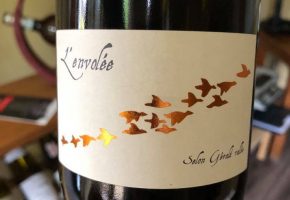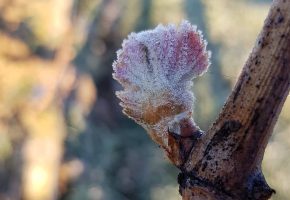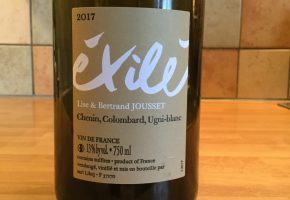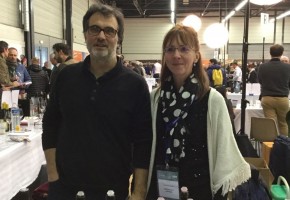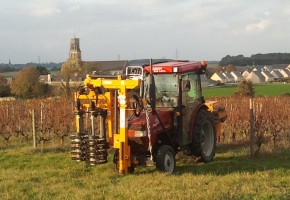
The Loire is the longest wild river in France at 629 miles or just over 1000km. Driving from the vineyards by the coast near Nantes to the famous hill of Sancerre will take around 6 hours as you cover around 500km. No wonder that the Loire has a vast range of wine styles and grape varieties and this doesn’t take into account the multitude of small satellite regions that are also gathered under the Loire valley umbrella when it comes to wine.
On the same latitude as Oregon, the Loire is what we call a cool climate wine region. This explains why the Loire makes such beautiful white wines every year. Around 50% of production is white, 25% rosé and 25% red. The Loire is the biggest producer of sparkling wine outside of Champagne and the biggest producer of rosé outside Provence. Because the Loire is on the climatic margins for growing grapes (and getting them ripe enough to make quality wine), this is why only around a quarter of total production is red wine and also explains why the reds of the Loire are normally medium bodied rather than full bodied and high in alcohol.

4 distinct regions with a wide range of grape varieties and wine styles. The Loire is one of the best regions in the world for diversity and value for money.
Many different grape varieties are grown in the Loire valley. In the west close to Nantes, the Melon de Bourgogne or (Muscadet as it is more commonly known) makes light dry wines that are an excellent match with seafood and fish. Rarely oaked, they are aged on their yeasty deposit (the lees) and sometimes have a slight spritz. More recently we have seen Muscadet being sold by the village name (Clisson, Le Pallet, Gorges). These wines often have extended time in tank before bottling (up to 6 years and sometimes more) and offer wonderful value for money.
The region of Anjou is famous for rosé wine made from local grape variety Grolleau. This is the only region in France to make off-dry (ie sweeter style) rosés and Rosé d’Anjou is a very successful partner to spicy food and for summer drinking on the terrace. Fine dry Chenin Blanc wines come from the appellation of Savennières, north of the river Loire close to Angers and south of the river in the hills of the Layon, some of the best sweet wine in the world can be found in the appellations of Coteaux du Layon, Bonnezeaux, Chaume and Quarts de Chaume. You’ll also find some Cabernet Franc and Cabernet Sauvignon wines in the appellations of Anjou, Anjou-Villages and Anjou-Villages-Brissac. Here, the bedrock is slate and schist with very shallow topsoil.

The appellations of Savennières, Vouvray and Saumur Champigny
Moving further east we come to Saumur, home to the sparkling wine industry. Wine made under the appellation Crémant de Loire has to be made in the same way as Champagne but of course using local Loire grape varieties (Chenin Blanc, Chardonnay, Cabernet Franc and Cabernet Sauvignon) and produced here in the Loire valley. Beautiful reds from the Cabernet Franc are found under the Saumur-Champigny, and Saumur Doué la Fontaine appellations and small quantities of delightfully fresh and crisp whites from the Chenin Blanc under the Saumur Blanc appellation.
Going east from Saumur we pass through the other 3 big red wine appellations of Bourgueil, St Nicolas de Bourgueil and Chinon. Red wines from the Cabernet Franc, the best vineyards are on limestone soils that are important to this grape variety that suffers from water stress. As we move away from the city of Tours we find ourselves back in white wine country with the delightful, dry, off-dry and sparkling Vouvrays and wines from Montlouis sur Loire. These Chenin Blanc wines are widely exported and very food friendly. You’ll also find a lot of Sauvignon Blanc from Touraine and as we eek ourselves further east again, lots of red wine from the Gamay and Pinot Noir grapes (blended together in the appellations of Cheverny and Valencay) and Malbec, called Côt here in the Loire valley.

The rolling hillsides of Sancerre. Quite different to the landscape elsewhere in the Loire.
Last but of course not least, as we finish our journey along the river, we come to perhaps the best known wine from the Loire valley, Sancerre. Dry and crisp, from the Sauvignon Blanc grape, it has a worldwide reputation. Other wonderful wines from the Central Vineyards area of the Loire that offer fantastic value for money are the Sauvignons from Quincy, Menetou-Salon and the Coteaux du Giennois. For reds, we are now in Pinot Noir territory with delicately perfumed wines made by many of the Sancerre producers.
Other satellite regions that are also technically part of the Loire are the vineyards of Haut-Poitou, Chateaumeillant, the Fiefs Vendéens as well as the lovely Chenins from Jasnières and the attractive Pinot d’Aunis from the Coteaux du Loir.
Each month, I’ll be focusing on a specific appellation, it’s grape varieties, wine style and terroir.
